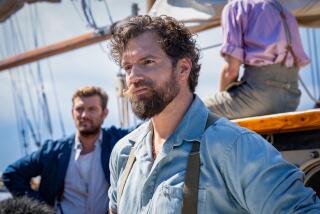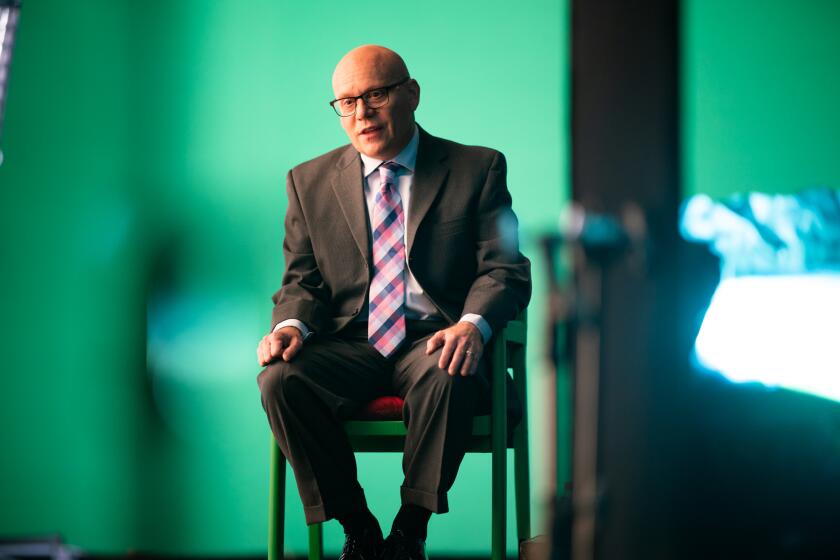Right on the front lines
At times the way in which life imitates art becomes surreal, and so it is with “Restrepo.” This intimate and visceral new documentary chronicling a single U.S. platoon on deployment in Afghanistan arrives in a week when the news has been dominated by Army Gen. Stanley A. McChrystal, our top soldier there, being relieved of command after comments critical of the Obama administration surfaced in Rolling Stone.
McChrystal took charge of the region in June 2008 just as the Battle Company platoon the film follows was finishing its tour. Restrepo is Juan S. Restrepo, an Army private with swagger, shades and an infectious smile, mugging for the camera in the early scenes of the documentary that bears his name. Restrepo is also the desolate outpost in Afghanistan’s deadly Korengal Valley named after him. He was 20 when he was killed in a firefight not long after his company arrived in June 2007, and the others did not want to forget.
Nor could this powerfully told documentary from filmmakers Tim Hetherington and Sebastian Junger be more timely, for whatever storms rage at the top, it is the troops on the ground who are left to implement the strategies of each new command. It’s told solely from the soldiers’ point of view. No politicians. No generals. No military pundits. No activists on either side with their pros and cons at the ready.
From the frightening chaos of daily firefights to the backbreaking boredom of digging bunkers in unforgiving terrain, in “Restrepo” (pronounced re-STREP-o), which deservedly won the Grand Jury Prize at Sundance earlier this year, the filmmakers have given us war at its most elemental. For all the high-tech equipment and the precision of high-flying bombers that have come to define modern warfare, the film is a reminder that much fighting is still done if not quite hand to hand, then alarmingly close enough to see the enemy’s breath fog the frigid mountain air.
The soldiers are, for the most part, achingly young yet remarkably insightful for their years, particularly 29-year-old platoon leader Capt. Dan Kearney; 25-year-old Sgt. Misha Pemble-Belkin; Sgt. Miguel Cortez, 26; and Sgt. Sterling Jones, 27, who with a few others emerge as the documentary’s central characters. Another, Master Sgt. Lamonta Caldwell, at 46, is the oldest and provides some historical context -- he’s done this before. It doesn’t get easier.
The Korengal Valley is home to Taliban strongholds and sits near the Pakistan border, and it is there that the narrative begins. The filmmakers -- both veterans of covering other wars and working for Vanity Fair and ABC News for this one -- worked side by side with the troops as they fought, embedded with them often a month at a time, in all spending five months in the valley over the course of the deployment.
It is true verite filmmaking, from a skirmish that stops the platoon on its way in to the various ways the guys blow off steam to the daily necessities of burning human waste since there’s no running water. Not long after we’ve gotten a feel for just how godforsaken this place is, Junger and Hetherington begin seeding in interviews they conducted with individual soldiers in Vicenza, Italy, where the platoon is based, soon after the tour in Afghanistan was completed.
In all, they shot roughly 150 hours of film to sift through with editor Michael Levine and associate editor Maya Mumma. Beyond checking with the families of the wounded and the dead about what would be included, Junger, best known as the author of “The Perfect Storm,” says they were given unfettered access to the troops.
Their style is straightforward, and the result is a candor that is as moving as it is illuminating. The documentary becomes as much about the men as the war as the soldiers talk of their mission, their families, their fears, the buddies who didn’t make it back, memories of the carnage the rest can’t leave behind.
“I don’t want to forget,” says one, “it’s made me who I am.”
They are good at what they do as they push back an insistent Taliban-run insurgency a few feet at a time. They are serious yet playful, a sort of locker-room mentality quickly setting in. We witness major offensives being planned, then unfolding, as well as the boredom that fills the space between the fights. And frustration, at times comic, as Capt. Kearney tries to explain to the local elders why U.S. troops are in the Korengal at all. While the Army’s selling progress, the elders just want money for the cow that got caught in the concertina wire encircling the outpost.
Though Junger and Hetherington, who shared camera operator duties and directing credit, say they had no pro- or antiwar agenda, it’s almost impossible to watch without your own views’ coloring the images that flash by on screen. Rather than showing death itself, the filmmakers show the moments after, and this they do only once -- the men who keep the best friend of a downed soldier at a distance, the grief that breaks him apart when he learns his buddy’s fate, the body quickly covered except for a single boot.
Just how close the filmmakers were to the action, and the risks they took with the project, filter into virtually every scene. We hear the bullets whizzing past, breaking branches in nearby trees. We watch the mad scramble that comes with one attack -- the images from the hand-held camera jarred by the movement, the sound briefly dropping out.
What “Restrepo” does so dramatically, so convincingly, is make the abstract concrete, giving the soldiers on the front lines faces and voices. Like a 20-year-old medic from Pembroke Pines, Fla., who laughed and fought and died. A face, a voice and a name, Restrepo, we should not forget.
More to Read
Only good movies
Get the Indie Focus newsletter, Mark Olsen's weekly guide to the world of cinema.
You may occasionally receive promotional content from the Los Angeles Times.











